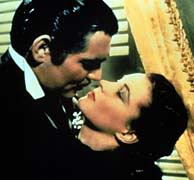As voting method nerds who appreciate the values of
ranked choice voting (RCV) elections, we at
FairVote got a kick out of the
Los Angeles Times running a
front-page story today on the RCV system (also called "preferential voting" and "instant runoff voting) that is used to elect the Academy Award for Best Picture and also for nearly all Oscar nominations.
The story comes with some
nifty graphics that get the story right -- be sure to check them out.
Unfortunately, the news story itself is a big disappointment. Reporter Glenn Whipp gets key details wrong -- including, most disturbingly, in his implicit advice about how a voter allegedly might try to game the vote.
First, Whipp fails to mention that ranked choice voting is nothing new for Academy of Motion Picture voters. In fact, Best Picture nominees have been selected by ranked choice voting ballot since the 1930s, as has nearly every other category (acting categories, director and many more).
We've explained how the multi-winner form of ranked choice voting works for nominations before. As a result, there is not a single Academy voter alive who has not been asked to cast a ranked choice voting ballot when nominating movies every year since they've became eligible to vote.
That's part of a general oversight to suggest that ranked choice voting is particularly novel. In fact, it's used to elect the parliament of Australia, president of Ireland, mayor of London and city leaders of at least ten American cities, including
Minneapolis (MN), St. Paul (MN),
Oakland (CA) and
San Francisco (CA). It's even more commonly used in non-governmental elections.
Robert's Rules of Order explains it as the best way to choose leaders when needing to vote by mail, and many
major private associations and more than
50 American colleges and universities use it to pick leaders. Other awards using include the Producers Guild of America and the Hugo Awards for science fiction.
Second, Whipp tried to be provocative with his opening, writing: "The Oscar winner for best picture Sunday night probably won't be the movie that the majority of voters put atop their ballots."
Oops.
If you understand "majority of ballots" to mean having more than half the votes, then Whipp is absolutely wrong. As soon as a movie has the votes of more than half of voters, that movie has won. Period.
If Whipp actually meant "having the most first choice rankings," he's correct that this does not guarantee a victory. But he's wrong to suggest that leading in first choices is somehow a disadvantage. Having the most first choices actually does help you win. As an example, San Francisco has used ranked choice voting to elect 18 city offices, including mayor, since 2004. Of the 51 administered elections that used ranked choice voting, 30 were won on the first count. Of the 21 others, 19 were won by the candidates who led after the first count. Only two were "comeback victories."
Of course a key value of ranked choice voting is to ensure that the leader in first choices isn't a polarizing choice that could win only because of a divided majority vote. Ranked choice voting avoids the controversy experienced last week when Beck defeated Beyonce for Album of the Year at the Grammy Awards.
Vox has a piece explaining that Beck may well have won only because he was the only nominee with a rock album, thereby benefiting from a split vote.
Most irritatingly, Whipp gives voters bad advice about how to vote, He writes "Some academy members, particularly those with a vested interest in the outcome, know enough to rank their own movie first and their closest competitor's last."
Well.
That's in fact not smart advice at all. In fact, long-time savvy entertainment writer Steve Pond took on that myth with a hard-hitting piece in 2011 called
Oscars Best Picture Ballot: Don’t Believe the Schmucks. Pond observes ""I went to a party over the weekend, and heard a producer who'd gotten a Best Picture nomination telling people, "It's a weighted ballot. You need to vote for [my movie] number one, and [our biggest competitor] number 10." He's wrong. It's not a weighted ballot. And his strategy would not do a damn thing to help his movie."
Unfortunately, Whipp just elevated the "schmuck" analysis to page one of the
Los Angeles Times.
The fact is that with the ranked choice voting ballot for Best Picture, every voter has one and only one vote, and their vote never counts for more than one movie at a time. It's a series of "instant runoffs", with the last-place film eliminated after each round, and ballots cast for that movie then added to the totals of the next ranked choice on each ballot.
So yes, voters should rank movies in order of choice, as this gives their vote a
backup. That backup will count only if your first choice has lost. That's why ranking your top competitor last does nothing to help your 1st choice. Your ballot will count for your first choice and ONLY for your first choice unless at some point during the count it ends up in last place and is eliminated from contention.
There's no way to "game" the vote with an insincere ballot. Anyone trying to do so is just hurting themselves -- and their favorite movies.
So Academy voters, rank your choices in order of preference, just as you can with
our demonstration election with this year's nominees. And let's get out the popcorn and enjoy Oscar night on Sunday!









